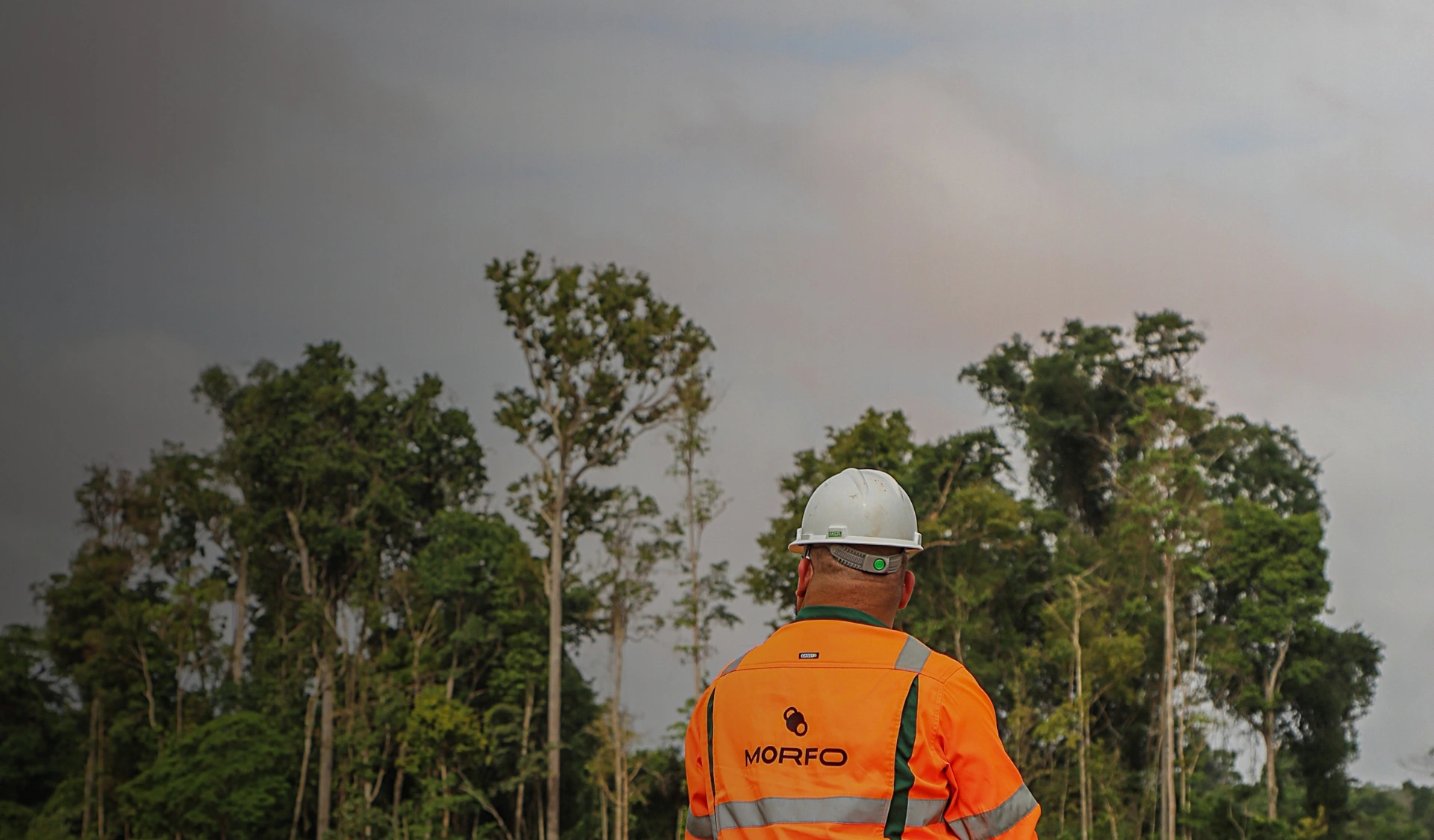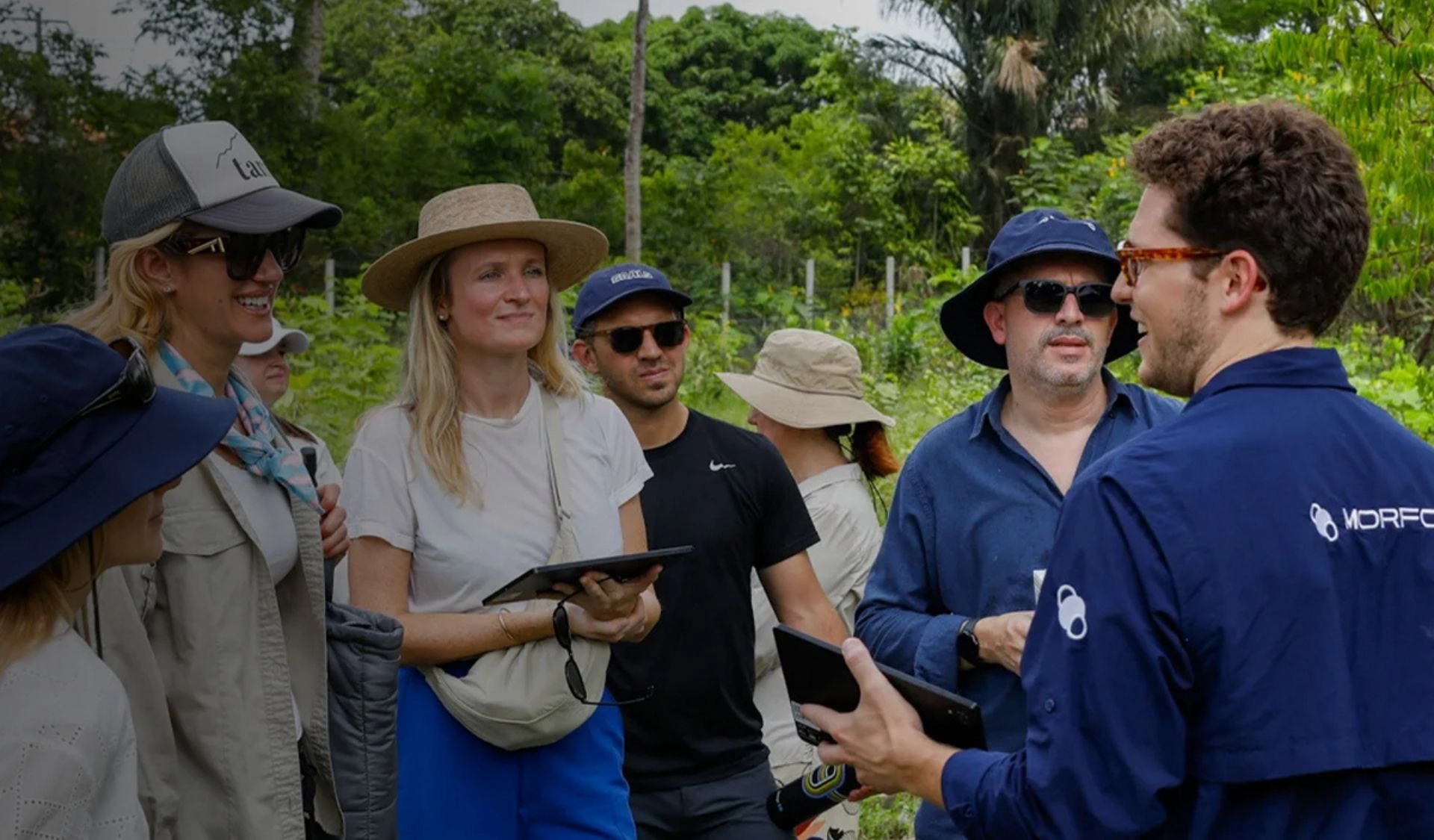A project in the municipality of Santa Cruz Cabrália in the state of Bahia, Brazil, is reforesting 55 hectares, 14 of which have already been reforested, in the tropical biome of the Brazilian Atlantic Forest. This revegetation and reforestation project, which aims to re-establish natural biodiversity and reduce the effects of deforestation, is being carried out in collaboration between MORFO and environmental organization Natureza Bela.
The land being restored is a former sugarcane plantation with low yields due to soil degradation. The land has not been used for 15 years, except for extensive grazing, and no vegetation has returned except for some low grass. Without intervention, the situation will be the same in 100 years. The main issues in this project are measuring the impact of invasive species such as Brachiaria, the choice of species to be planted, and the success rate of the planting.
Discover this project on video:
A plantation that combines manual methods and drone planting
Deployment of the 1st plantation of 14 hectares was completed in two weeks, combining drone planting with the assistance of a drone pilot and other members of MORFO's scientific team, with manual planting carried out by Natureza Bela.
Monitoring of the plantation is done at regular intervals, every 6 months at the beginning, then once a year by air. In addition, a local farmer partner conducts weekly monitoring in the field. The success of the plantation is evaluated through different criteria such as germination rate, survival rate, growth rate and species behavior. Monitoring cycles are defined according to these parameters to evaluate the progress of the plantation.
A project with a strong social impact
Our partners from Natureza Bela with the team in charge of the preparation and the follow-up on the field
This project has a strong social impact, creating employment opportunities locally, from seed collection to planting and monitoring projects. Indeed, MORFO helps local organizations to reforest faster, on a much larger scale and at lower cost.
.jpeg)
MORFO partnered with the environmental organization Natureza Bela during this project in Bahia. It was essential to the project: thanks to their knowledge of the local ecosystem, they cooperated by collecting seeds and growing saplings in their nurseries, which were then planted manually at the end of April.
Founded in 2001, Natureza Bela contributes to nature conservation by providing environmental education and strengthening citizenship. Natureza Bela has already reforested over 200 hectares and is currently restoring 1113 hectares of forest land, within a total of 7 forest restoration projects. This equates to the planting of 2,296,000 trees.
Their missions are primarily to preserve the environment through environmental education, forest restoration and citizenship building. They also aim to promote environmental restoration actions in altered and/or degraded areas by planting native saplings, produced in their own nurseries. They prioritize the formation of ecological corridors through territorial landscape planning, as well as the monitoring of restored areas in the Central Corridor of the Atlantic Forest (CCMA), with emphasis on the Mosaic of Protected Areas of the Extreme South of Bahia (MAPES).
Crispin, the seed collector
.jpeg)
Crispin was the supplier and leader of the group of seed collectors for Natureza Bela and for this project. After suffering the loss of his job, Crispin found himself in a precarious financial situation. However, this professional opportunity has allowed him to recover financially while providing him with the opportunity to get involved in a critically important cause that directly impacts the world.
Crispin's extensive knowledge of the fauna of the area was invaluable in helping us select and collect the seeds needed to restore the ecosystem. His active participation in this project was invaluable.
Hear Crispim's story by watching our interview with him:
Blue Diamond seed
During our project we discovered the fruit named Maria Luíza, also called the "Blue Diamond". This fruit gave the name to Crispim's group of seed collectors: Diamante Azul.
.jpeg)
Shown here by Crispin, this fruit starts out green and ripens to a brilliant iridescent blue when it falls to the forest floor. It is likely that the plant developed this unusual coloration to help birds spot the fruit, which they eat and scatter. As you can see, it is a very small fruit, measuring only 1.4 cm and consisting of 4 or 5 lobes.
We chose to work with this seed for several reasons. In addition to being native to the biome, this seed has a high germination rate and will give birth to a fast growing, slender tree called Margaritaria Nobilis.
Follow the progress of our reforestation project in Bahia by clicking here.








